In the world of interior design, modern style is on the rise. It’s growing by 10% every year in real estate and home decor. This shows how popular and appealing modern interior design has become.
Modern interior design is more than a trend. It’s a big change in how we design and use our homes. It focuses on simplicity, clean lines, and being functional. This turns regular rooms into special places that meet our modern needs.
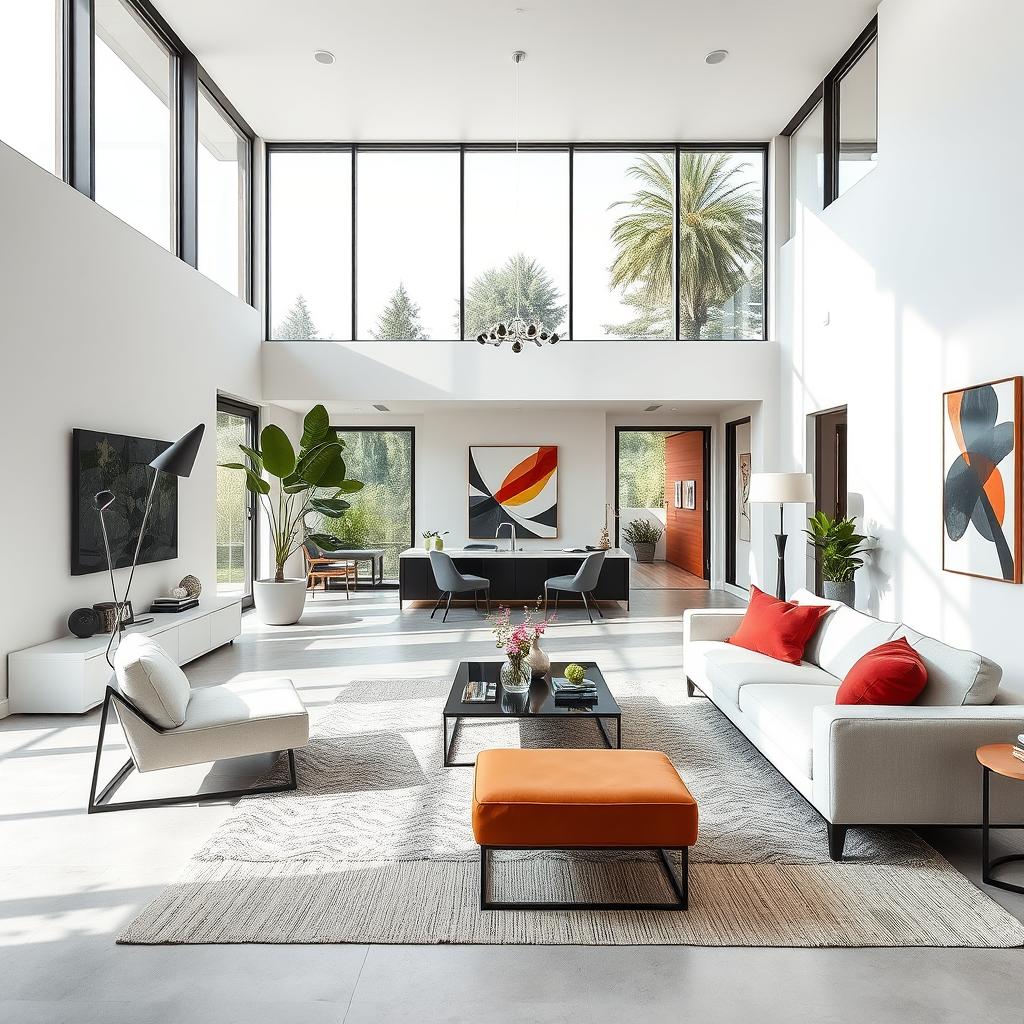
Modern interior design aims to make spaces look good and work well. It uses colors, furniture, and tech to create homes that show off our style. This way, homeowners can make spaces that really feel like their own.
What is Modern Interior Design?
Modern interior design started in the early 20th century. It’s often mixed up with contemporary design. This style focuses on simplicity, clean lines, and being useful.
It comes from the modern art movement. It uses warm colors, natural materials like wood and stone. And it aims for a calm, uncluttered feel.
Understanding the Concept and Principles
Modern interior design is all about minimalism. It gets rid of things we don’t need. Furniture and decor are simple and useful, making the space look good and feel right.
Natural light and open spaces are key. They make the area feel light and connected.
Embracing Simplicity, Clean Lines, and Functionality
This design style loves clean lines and balance. Decor is chosen for its purpose, not just to look good. The colors are warm, like white, grey, and beige.
It also uses natural materials like polished metals and raw woods. This adds depth and beauty.
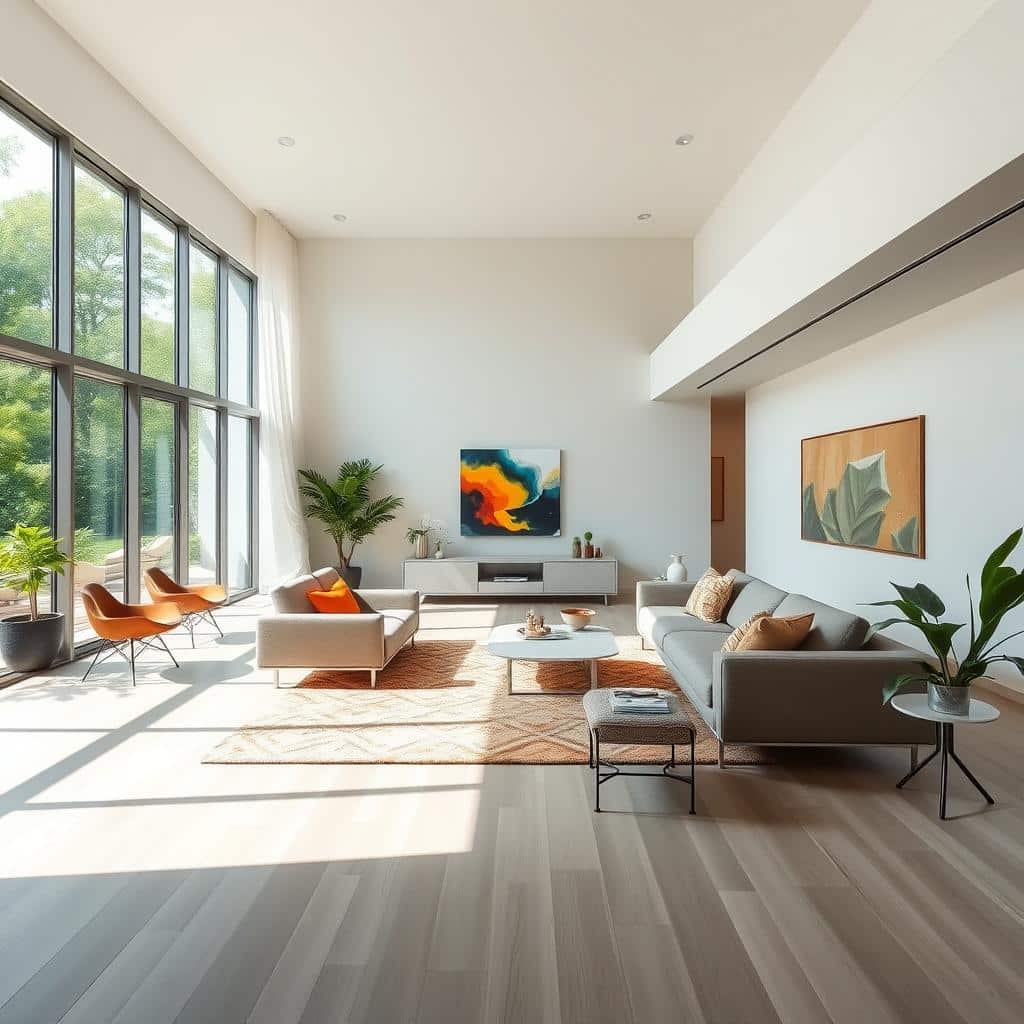
Following modern design interior principles makes spaces look great and work well. It’s all about keeping things simple, using natural materials, and focusing on function. This creates a calm, elegant space that lasts over time.
Reflecting Personal Style and Preferences
Modern interior design is all about personal style and preferences. Colors greatly affect a room’s mood. Choosing colors that match your desired atmosphere is essential. Mixing bold colors with neutral ones creates a balanced and beautiful space.
Furniture is also key in interior modern design. It should be both functional and stylish. Choosing furniture that fits your design theme and needs is important. Adding unique pieces and decorative items like artwork and textiles adds personality and warmth.
Interior designer Huma Sulaiman says starting with self-description is vital. It’s about understanding yourself, not just numbers. Designer Andrea Lavigne suggests looking at past travels for design inspiration. Amanda Jacobs believes family history and culture are important in shaping design preferences.
Elizabeth Ghia points out the importance of personal interests in design. It’s about emotional connections and expressing yourself. By embracing these views, modern interior design style becomes a way to show who you are, creating a space that truly reflects your personality.
| Statistic | Insight |
|---|---|
| Instagram and Pinterest are popular platforms showing interior design trends, with users seeing many styles. | Visual social media shows how important personal style and expression are in modern design. |
| Personal style changes over time, influenced by experiences like travel and life events. | Designers need to be flexible, considering how clients’ styles may evolve with their experiences. |
| Designers stress the value of using images to share personal style. | Visuals are a key tool for designers to understand and share a client’s preferences. |
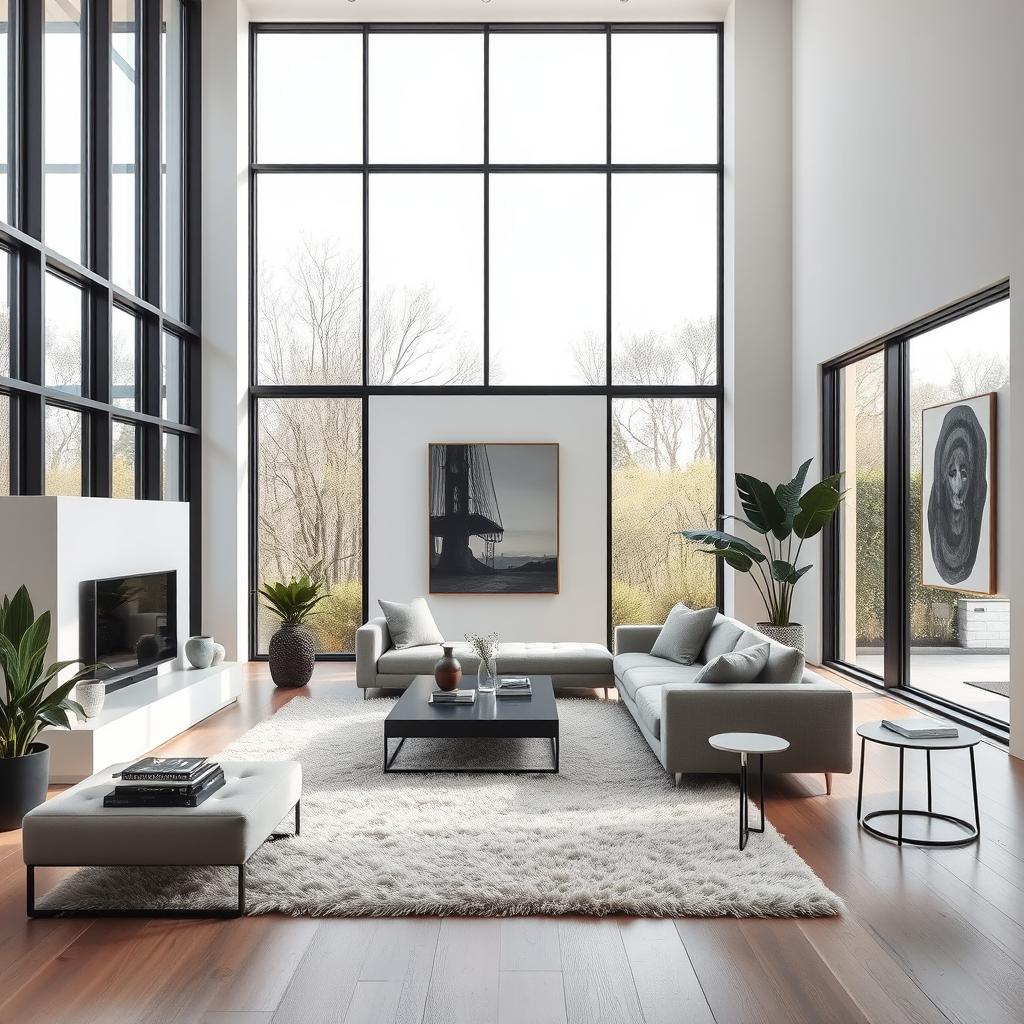
Key Elements of Modern Interior Design
What is modern design style? Modern interior design focuses on simplicity and clean lines. It’s all about finding the right balance between looks and function. Let’s dive into what makes modern interior design characteristics unique.
Color Palettes and Textures
Color is key in modern interiors, setting the mood and feel. Neutral shades like white, gray, and beige are the base. They bring calm and let the design shine.
Accent colors like bold blacks or bright greens add excitement. They bring depth and interest to the space.
Textures also play a big role. Smooth surfaces like glass or concrete meet natural materials like wood or leather. This mix adds beauty and interest.
Furniture and Decor Choices
Furniture in modern homes is simple and functional. Think low sofas and sleek tables. Decor is chosen with care, focusing on simplicity and balance.
Modern style interior design celebrates minimalism. Each piece has a purpose, creating a harmonious space. Embracing these principles can turn your home into a peaceful, stylish retreat.
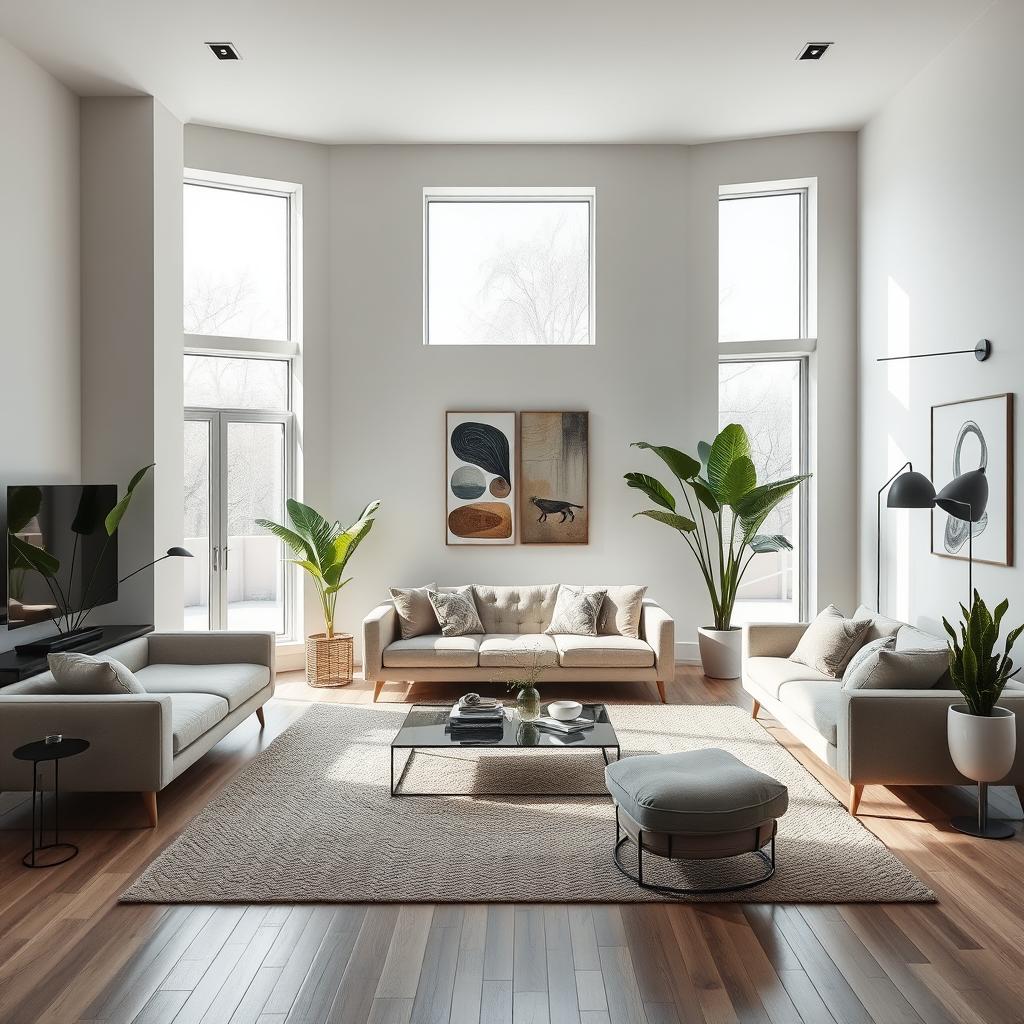
Modern Interior Design: Transforming Spaces
In the world of modern interior design, it’s more than just looks. It’s about finding the right mix of style and function. This creates spaces that are not only beautiful but also meet the needs of those who use them.
Lighting is key in this process. It can change how a room feels. By using different lights, designers make sure a space is bright and interesting. Decorative lights add beauty and a touch of modern style.
But good design is more than just lights. It’s about using modern design principles to blend function and beauty. Clean lines, simple furniture, and a smart color scheme are all part of this. They make a space look good and feel comfortable.
| Modern Interior Design Trends | Benefits |
|---|---|
| Incorporation of 3D design technology |
|
| Adoption of DevOps practices |
|
| Integration of virtual and augmented reality |
|
By following modern design principles, designers can make spaces that are both beautiful and practical. These spaces reflect the unique tastes and lives of their owners. They are not just pretty; they are also welcoming and comfortable, changing how we see our homes.
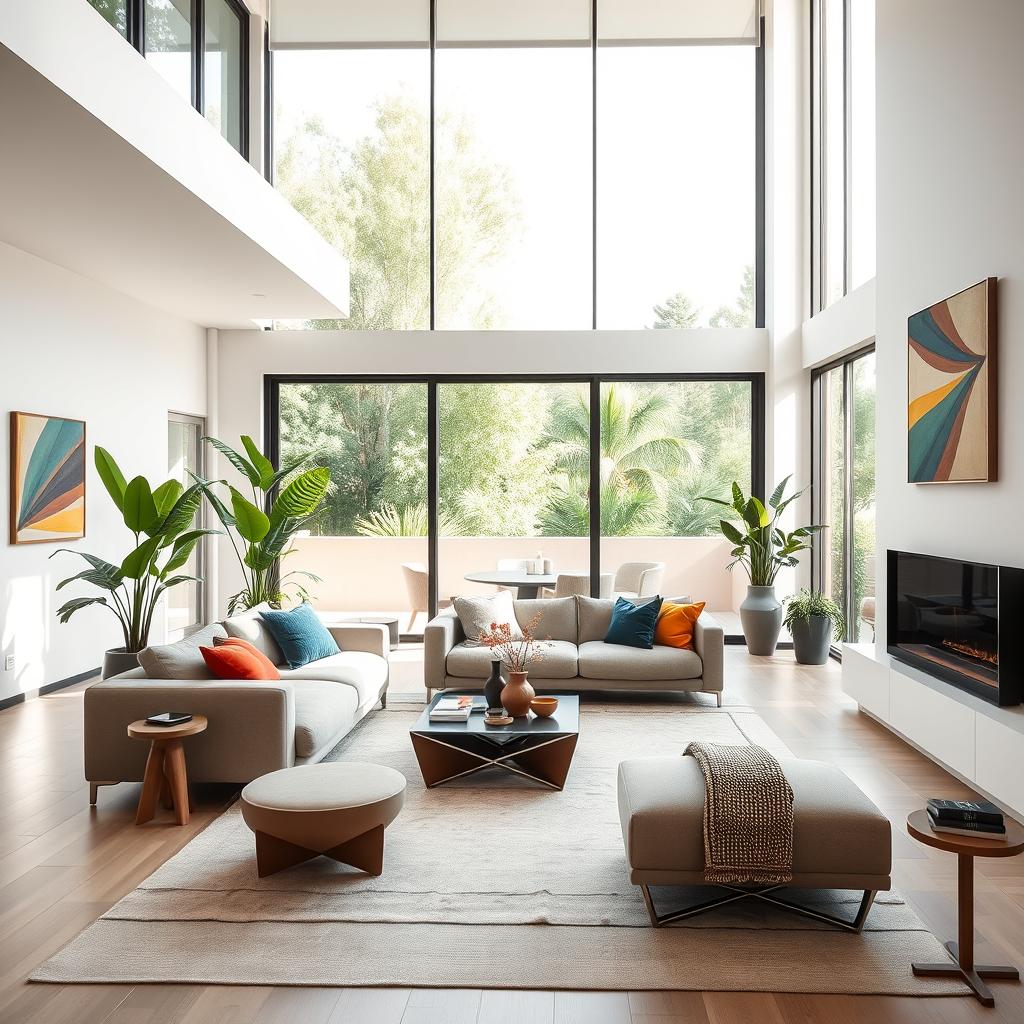
Sustainable and Eco-Friendly Approaches
Sustainability is key in modern interior design. People want homes and offices that show their style and care for the planet. Interior designers are making spaces that are both cozy and eco-friendly.
Incorporating Natural Elements and Recycled Materials
Using natural and recycled materials is a big part of sustainable design. Renewable, recyclable, and biodegradable materials are getting more popular. They include bamboo, cork, reclaimed wood, and recycled glass, which are strong, versatile, and beautiful.
Lighting and appliances that save energy are also important. LED lighting uses up to 70% less energy than old bulbs. About 42% of designs now use LED lights. Also, ENERGY STAR-rated appliances are growing in use by 12%, showing a focus on saving energy.
Choosing furniture that’s good for the planet is also a trend. Furniture from FSC-certified wood, recycled metal, or natural fibers is seeing a 30% increase in demand. This shows a move towards furniture that’s kinder to the environment.
Biophilic design, which brings nature inside, is also popular. It can improve indoor air quality by 25%. This makes it a favorite for healthier homes.
Water-saving fixtures are another part of sustainable design. Water-saving faucets and toilets are used in 60% of projects. Minimalism and using materials again are also big, with a 40% increase. This shows a focus on making spaces that are good for the planet and look great.
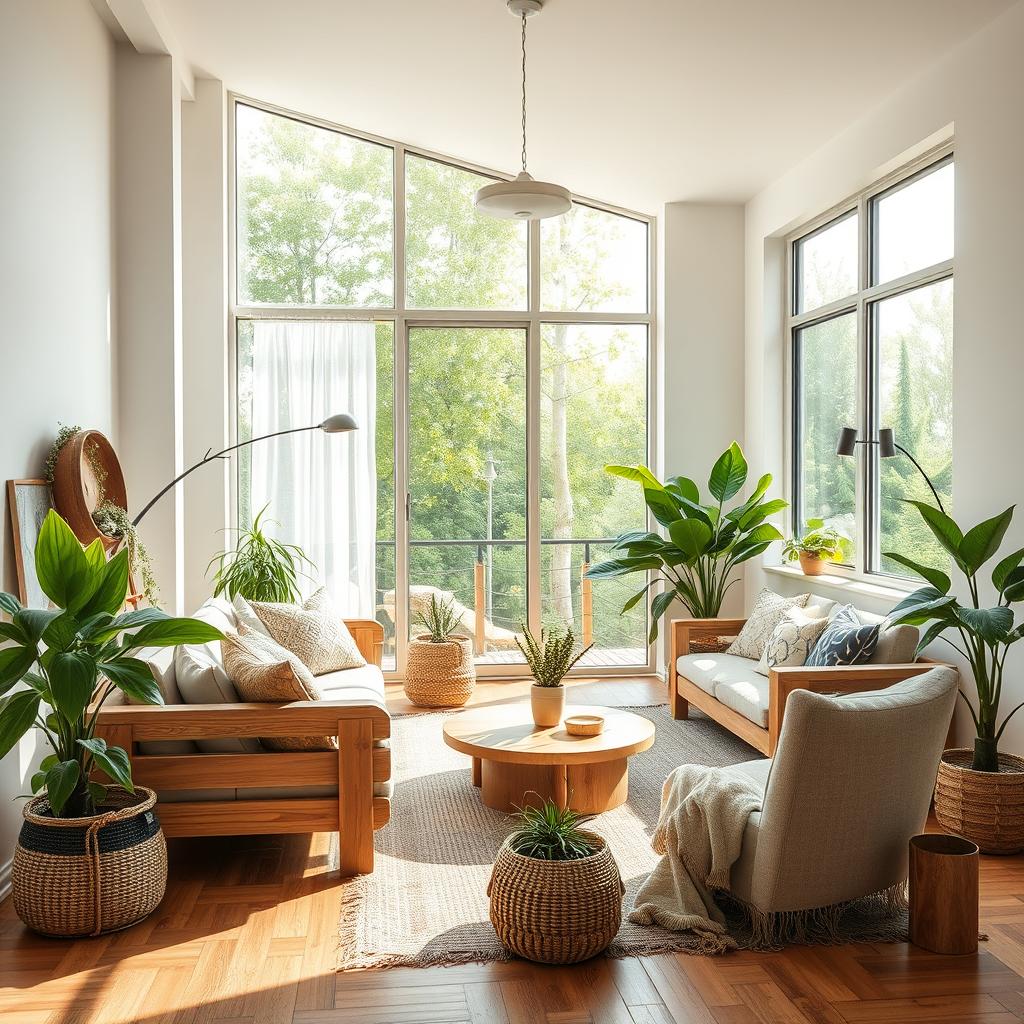
Modern interior designers are making a difference by using eco-friendly methods. They inspire others to choose sustainable options. This benefits the planet and improves our health and happiness.
Integrating Technology and Smart Home Solutions
Modern interior design is changing fast, thanks to smart home technology. Now, we have automated systems for lights, heat, and security. These systems, along with new materials, are making our homes more efficient and stylish.
Smart home tech is changing how we live in our homes. It lets us control lights and windows with our voices. This makes our homes more convenient and saves energy. Plus, it doesn’t mess up the look of our homes.
- Motorized shades offer convenience, safety, and style for modern interior design.
- Lighted mirrors with built-in LED lights are popular in modern bathrooms and dressing rooms.
- Smart kitchen appliances provide convenience and efficiency to daily kitchen routines.
- Small aperture speakers offer hi-fi sound without taking up much space, enriching the home’s look.
- Central control hubs for smart homes allow control of all devices and systems from one place, reducing the visibility of individual devices.
| Smart Home Technology | Benefits |
|---|---|
| Smart Lighting Systems | Let you change brightness and color from anywhere or with your voice. They make your home look better and save energy. |
| Smart Thermostats | Change the temperature based on when you’re home and the weather. They help you save energy and stay comfortable. |
| Smart Security Systems | Give you touchless entry, live video, and control from your phone. They make your home safer and give you peace of mind. |
As smart home tech gets better, we’re seeing more focus on simple designs and making things personal. Today’s smart homes have everything connected, from entertainment to voice assistants. They make our lives easier and more enjoyable.
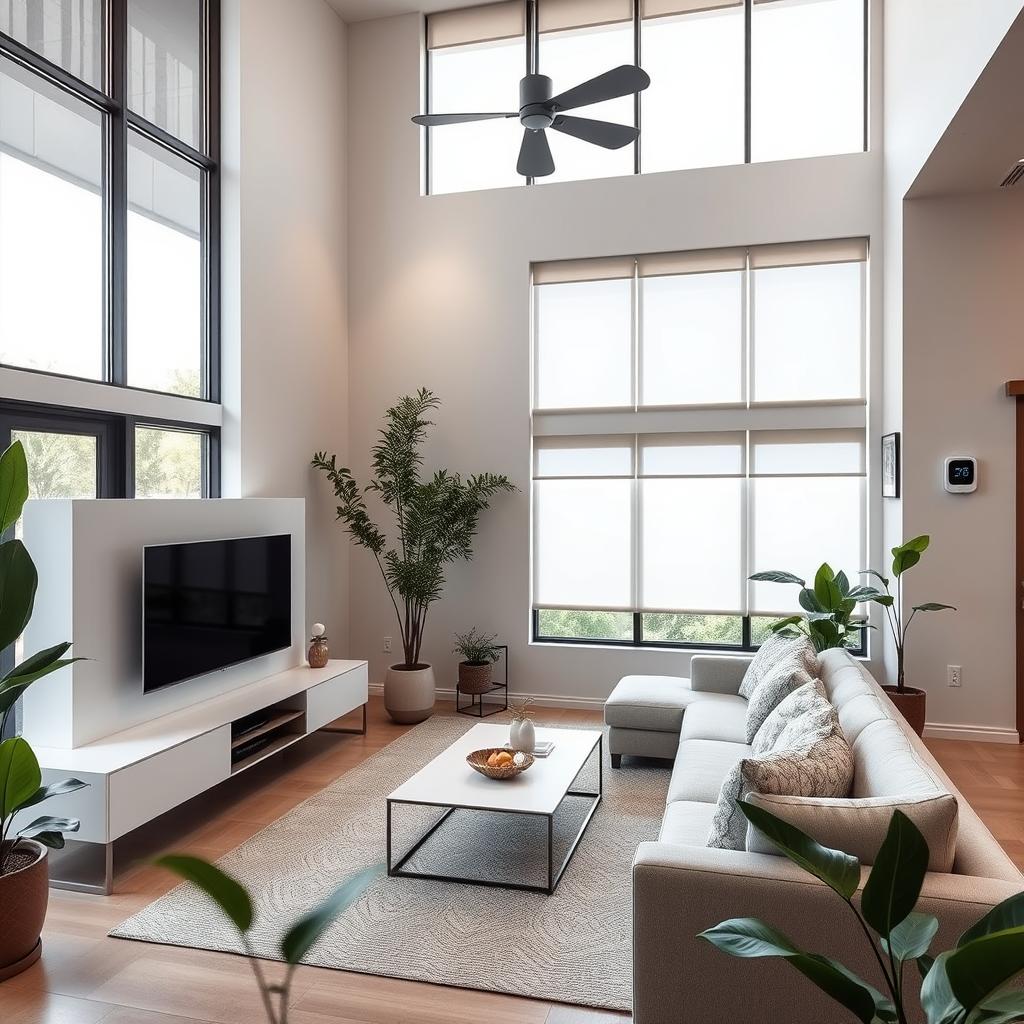
The future of home design is all about mixing looks and function. Smart homes will make our lives easier, save energy, and make our homes more comfortable and convenient.
Lighting Strategies for Modern Interiors
Lighting is key in modern interior design. It changes how a room looks and feels. By using different lights, like ambient, task, and accent, designers add depth and beauty.
Layering Ambient, Task, and Accent Lighting
Ambient lighting, like recessed lights or pendant lights, lights up the whole room. It sets the mood. Task lighting, such as under-cabinet lights or floor lamps, helps with specific tasks. Accent lighting, like wall sconces or decorative lights, brings out special features or art.
Using these lights smartly can make a big difference. For example, in a kitchen, ambient lights provide overall light. Task lights help with work areas. Accent lights show off the backsplash or open shelves.
Decorative lights can also be art pieces. They match the modern look and add personal style. From simple to bold, the right lights can make the whole space better.

When planning lighting for a modern space, think about the design, function, and mood. By mixing different lights, you can make a space that looks great and works well.
Maximizing Space with Multi-Functional Designs
Our lives are getting more complex, and our homes need to change. Modern interior design now focuses on multi-functional spaces. These designs combine beauty with usefulness. They are great for small city homes or adding flexibility to any room.
Multi-functional furniture is a big help in saving space. Items like sofa beds, folding tables, and modular shelves can make up to 30% more room. These designs let homeowners easily switch between work, rest, and fun, meeting their changing needs all day.
- Sofa beds are a classic example, acting as both a cozy spot to sit and a place for guests to sleep.
- Folding tables and chairs are perfect for dining, working, or outdoor use. They can be tucked away when not needed.
- Modular shelving systems offer custom storage, making the most of vertical space and keeping rooms tidy.
Modern design also uses walls and hidden spots to make rooms feel bigger and more useful. Floating shelves, pegboards, and hanging storage turn unused vertical areas into useful spots. Turning odd corners, like the space under stairs, into cozy spots or extra storage is another way to use every inch.
By using multi-functional designs and making the most of every inch, homes become welcoming and adaptable. This approach boosts a home’s usefulness and supports eco-friendly living. It helps use resources wisely and reduces harm to the environment.
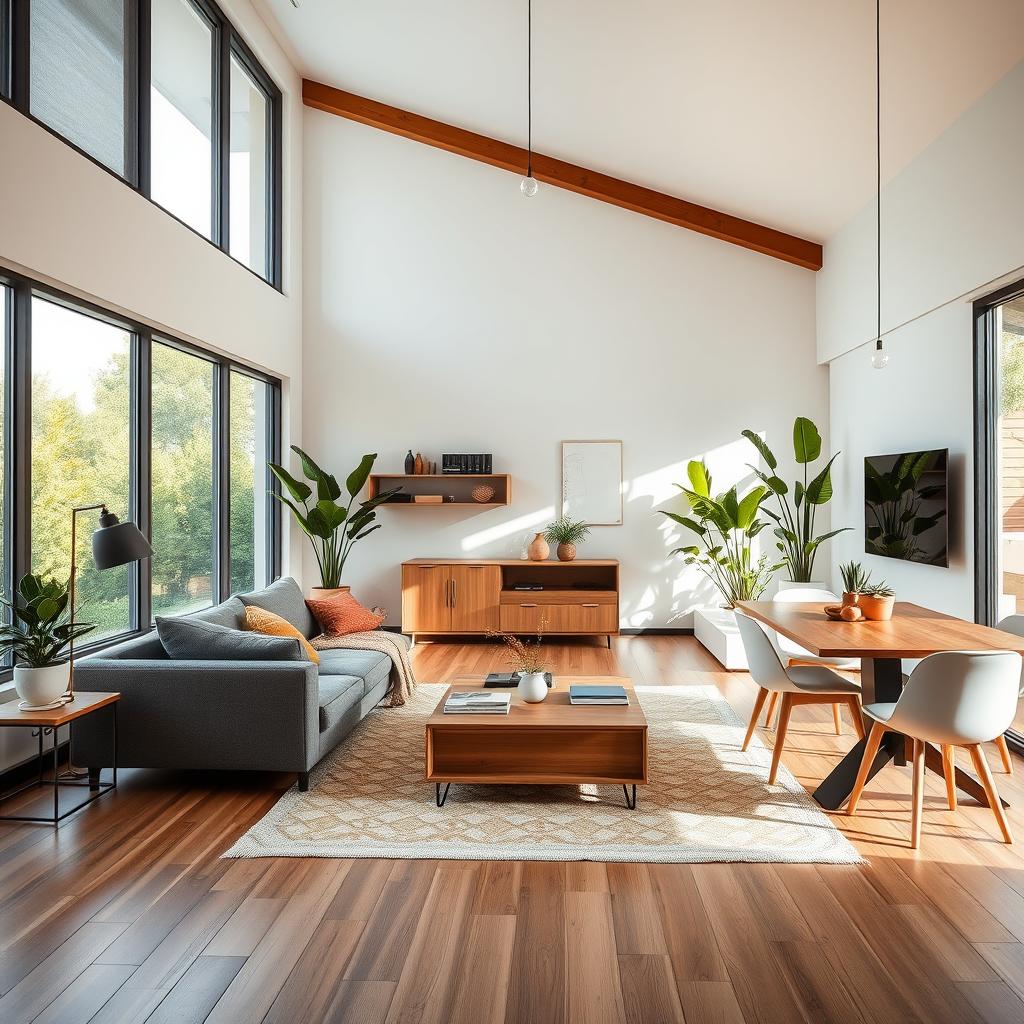
Biophilic Design: Bringing Nature Indoors
In modern interior design, biophilic design is becoming more popular. It aims to connect people with nature indoors. This design uses natural elements, materials, and features to make spaces feel harmonious and refreshing.
Natural light is key in biophilic design. It makes spaces look better and cuts down on the need for artificial light. This approach is good for the planet and saves energy. By placing windows and skylights right, we can let in more natural light, making spaces feel brighter and more welcoming.
Using natural materials like wood, stone, and plants is also important. These elements make spaces look good and connect us to nature. For example, wood floors, stone countertops, and plants can make a space feel calm and peaceful. They also support green design.
- Natural light is a cornerstone of biophilic design, enriching interiors and reducing artificial lighting needs.
- Using natural materials like wood and plants supports sustainability and well-being in indoor spaces.
- Indoor plants improve air quality, lower stress, and boost mood in biophilic design.
- Living walls and vertical gardens in architecture enhance air quality and connect nature to indoor spaces.
Biophilic design also includes natural elements like water features and open spaces. These elements help us feel closer to the outdoors. For example, indoor water features like fountains can be calming. Atriums and open layouts improve air quality and bring a sense of calm.
| Biophilic Design Benefits | Impact |
|---|---|
| Improved air quality | Increased oxygen levels and reduced pollutants |
| Stress reduction | Enhanced mental well-being and relaxation |
| Increased productivity | Improved focus and creativity in work environments |
| Sustainable design | Reduced energy consumption and environmental impact |
By using biophilic design, interior designers can make spaces that are not just beautiful but also good for our health. This approach works in homes, offices, and public areas. It brings nature indoors, improving our connection to the world around us and our overall well-being.
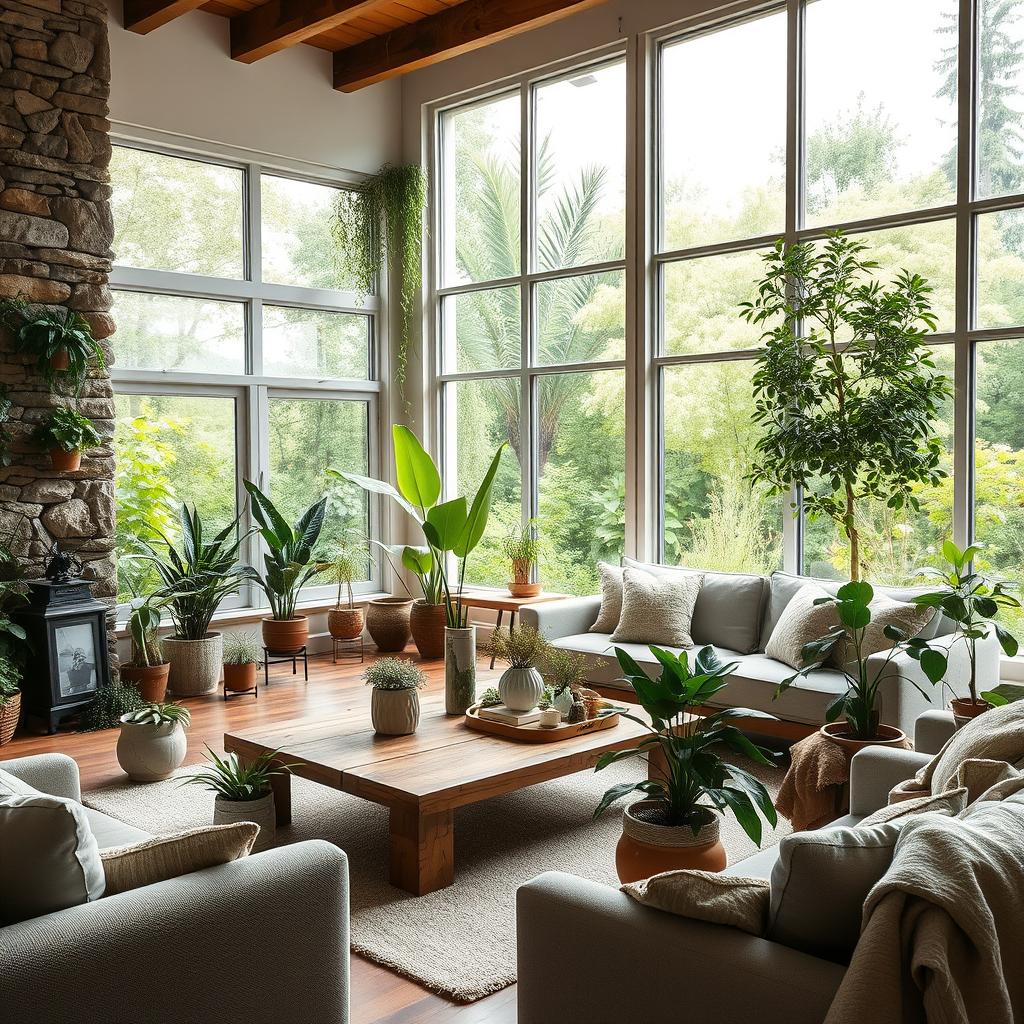
Minimalism and Careful Curation
In modern interior design, minimalism is big, but it’s changing. It’s not just about empty spaces anymore. Now, it’s about choosing the right pieces carefully.
This means picking quality over quantity. Homeowners look for unique, handmade items. These choices make spaces feel open and personal.
Quality over Quantity in Furnishings and Decor
Minimalist design is popular today. It’s all about living mindfully and choosing sustainable options. People want spaces that are easy to adapt and reflect their own style.
Designs that are clutter-free and have simple shapes are key. Organized storage and a focus on color are also important. These elements help create a clean, minimalist look.
Choosing minimalist design has many benefits. It can save money and make spaces feel bigger. It also reduces stress and makes spaces versatile.
In living rooms, it’s all about simplicity. Focus on what’s essential and avoid too much. This balance makes spaces both simple and functional.
- Neutral color palettes dominate minimalist home decor.
- Monochromatic color schemes add sophistication to spaces.
- Functional and multi-purpose furniture are essential in minimalist design.
- Storage solutions are key to keeping a minimalist look.
- Clean lines are a hallmark of minimalist furniture.
Embracing minimalism lets homeowners create spaces that are both beautiful and practical. It’s about choosing the right items carefully. This approach makes spaces truly personal and thoughtful.
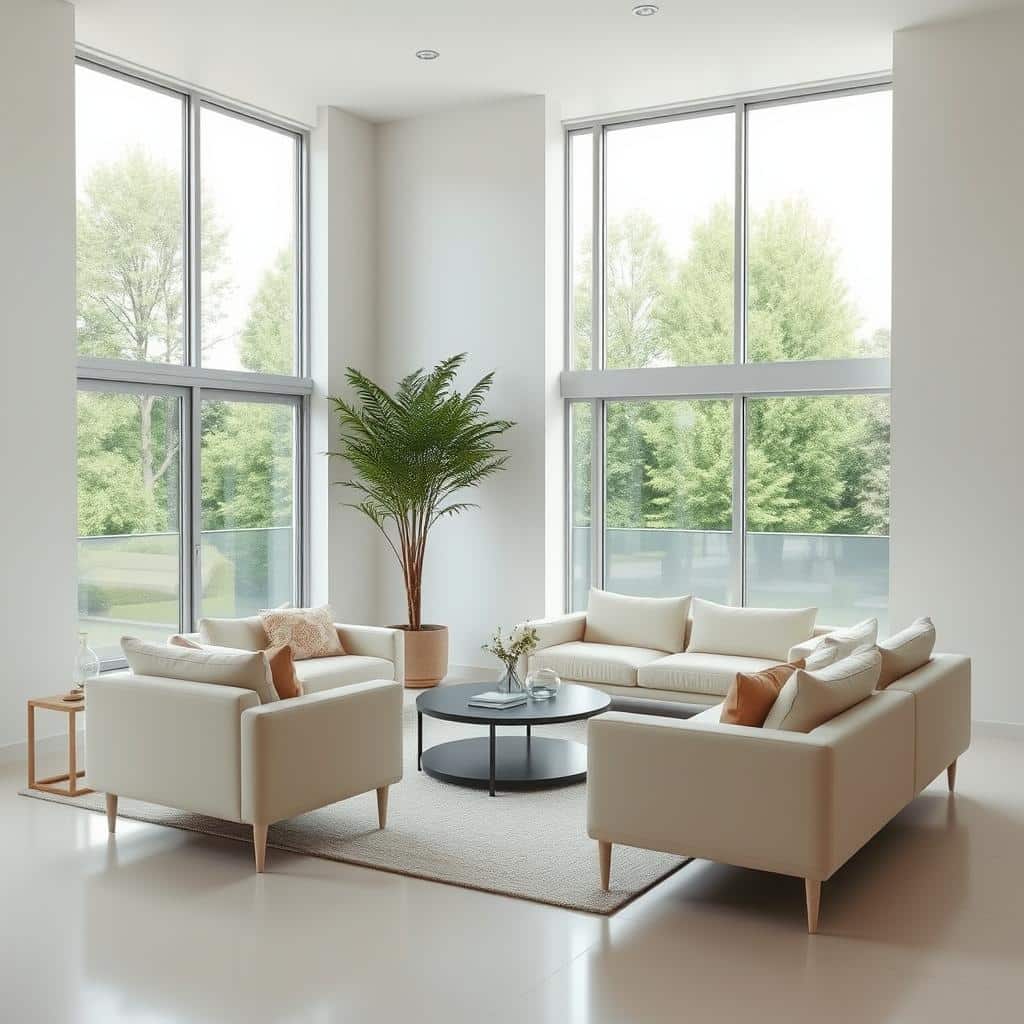
Personalization: Reflecting Individuality
In modern interior design, personalization is key. Designers now focus on unique tastes and personalities of clients. Every detail, from colors to furniture, tells a story of the space’s owners.
Studies show over 80% value personal expression in design. Also, 65% want to show their interests in their homes. And 75% choose comfort and uniqueness over trends.
Brands like Canvas Home and Ferm Living are popular for their unique designs. They blend simplicity with a personal touch. 70% of people choose them for their tailored approach.
People also want functional items that look good. 60% prefer items that serve more than one purpose. Brands like Tom Dixon offer designs that meet this need.
Creating a personalized home is a journey, not a quick fix. 90% see it as a key part of the design process.
Bespoke Design: Crafting Personalized Interiors
Bespoke design goes deeper, with designer and client working closely. It ensures every detail reflects the homeowner’s style and preferences.
This approach adds depth and dimension with textures and tones. Unique materials and techniques turn functional items into art, making the space more appealing.
Bespoke design balances bold and subtle elements. It incorporates personal items into a cohesive, visually stunning space. By focusing on color’s psychological impact, it truly reflects the owner’s individuality.
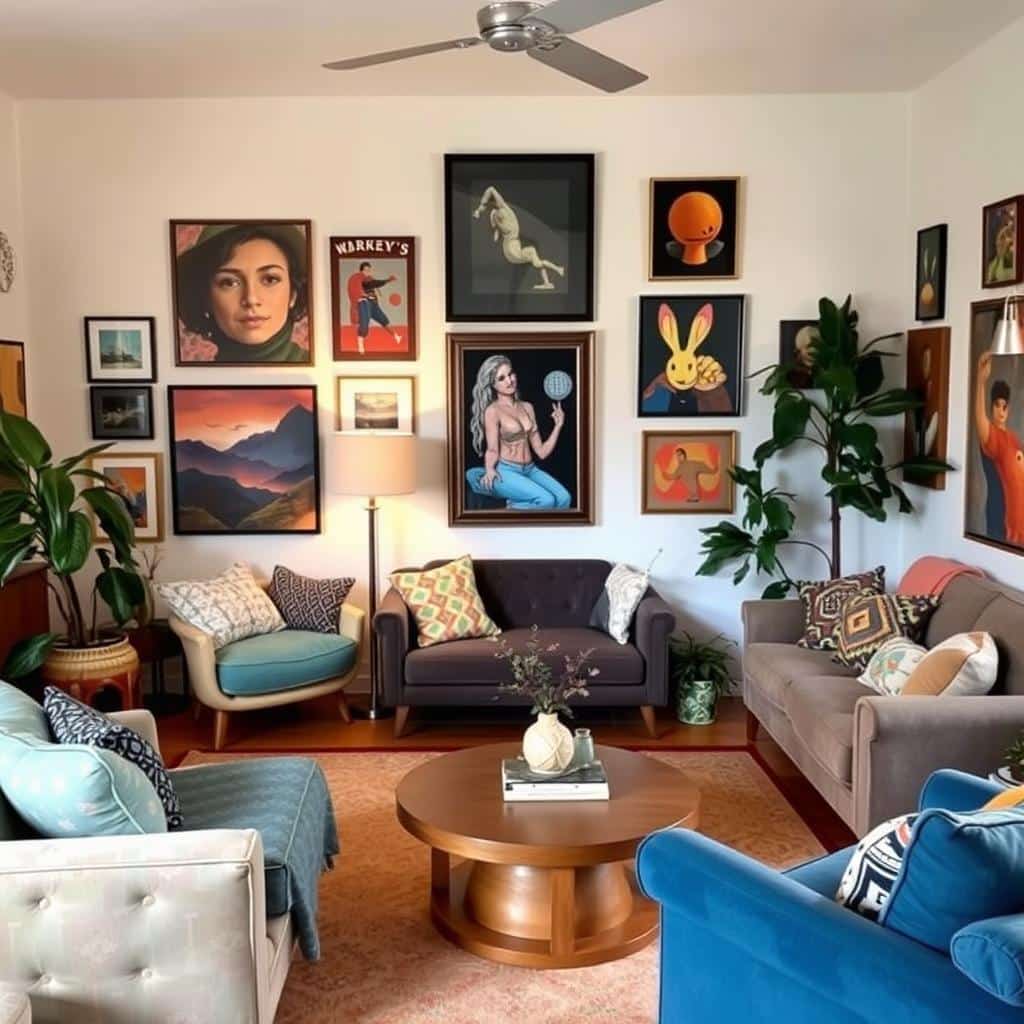
Trends and Innovations in Modern Interior Design
What is modern interior design? The world of modern interior design is always changing. New trends and innovations are coming out, changing how we see and use our homes. From exciting colors to the latest tech, modern design is all about creativity and usefulness.
Bold, yet soothing color mixes are big in modern design. Deep blues, bright greens, and warm terracottas make spaces lively yet cozy. These colors can be bold statement walls or soft touches, adding life and personality to any room.
Textures are also key in modern interiors. Designers mix rough with smooth, matte with shine for interest. Textured wallpapers, soft fabrics, and varied finishes bring a touchable feel, making spaces more engaging.
Modern design also means smart home tech. Things like voice-controlled lights and climate systems, and multi-use furniture, blend form and function. This tech makes life easier and greener, changing how we live.
Personalization and individuality are at the heart of answering the question: what is modern style interior design? People want their homes to show who they are. This can be through special furniture, decor, or natural elements, making spaces truly unique.
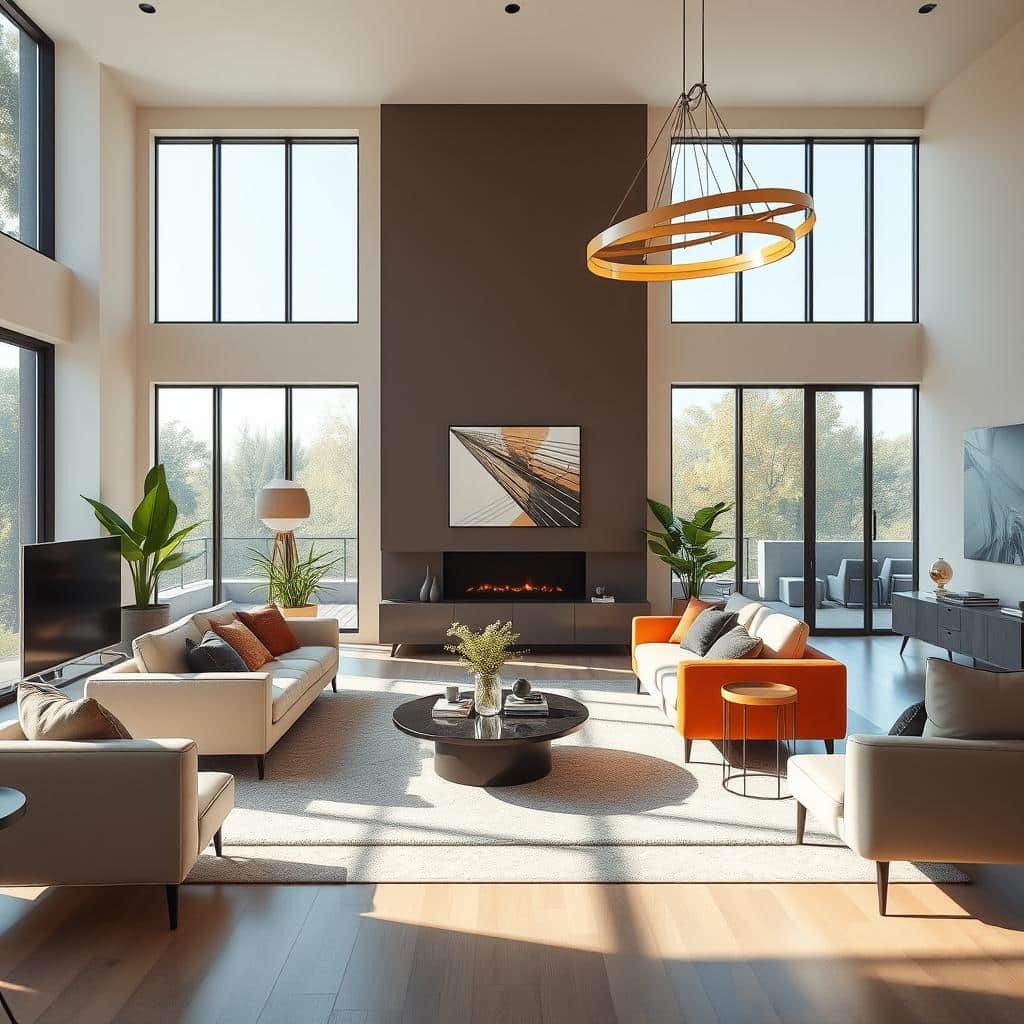
Modern interior design is all about bold colors and smart tech. These changes are making our homes better places to live, work, and play. By using these new ideas, we can create spaces that are beautiful and connect us to our surroundings.
Conclusion
Modern interior design changes how we live and feel. It makes our spaces reflect who we are and what we like. With clean lines and natural materials, it shows how beauty meets practicality.
Looking to refresh your home or office? Modern design can help. It focuses on simplicity and function, making spaces that are both beautiful and useful. This style lets us express ourselves and meet our changing needs.
The modern design approach guides us in creating better spaces. It shows that our surroundings can improve our lives and inspire us. By following this ethos, we can make places that are not just pretty but also supportive of our well-being.
FAQ
What is modern interior design?
Modern interior design is all about simplicity and clean lines. It focuses on making spaces functional. You’ll see lots of neutral colors and smart tech and green elements.
What are the key principles of modern interior design?
Modern design is all about simplicity and clean lines. It aims for a space that’s both beautiful and useful. The goal is a calm, clutter-free area.
How can I incorporate my personal style into a modern interior design?
You can make modern design your own by mixing your style with simplicity. Pick furniture and colors that show who you are, but stay true to the modern look.
What color palettes and textures are typical of modern interior design?
Modern design often uses neutral colors like white, gray, and black. But, it also adds bold colors for interest. Textures are key, with smooth and rough surfaces used together.
How can modern interior design transform a space?
Modern design can change a space by making it more functional and bright. Clean lines, simple furniture, and smart tech can make a room look and feel better.
What are the sustainable and eco-friendly approaches in modern interior design?
Modern design is getting greener with recycled materials and energy-saving gadgets. Adding plants and natural light also makes spaces feel more organic and good for the planet.
How can technology be integrated into modern interior design?
Smart home tech is becoming a big part of modern design. It includes systems for lights, heat, and security. New materials that are both durable and stylish are also being used.
What is the role of lighting in modern interior design?
Lighting is very important in modern design. It changes how a space looks and feels. Using different types of lighting makes a space bright and interesting.
How can modern interior design maximize space and functionality?
Modern design focuses on using space wisely. It uses furniture that can do more than one thing. And, it includes hidden storage to keep things tidy and useful.
What is biophilic design, and how does it relate to modern interior design?
Biophilic design connects people with nature. In modern design, it means using natural materials and adding plants and light. This creates a healthy and refreshing space.
How can minimalism and careful curation be applied in modern interior design?
Modern minimalism is about choosing quality over quantity. It’s about picking a few special, handmade items that show off your personality.
How can modern interior design be personalized to reflect individual style?
Modern design is all about making spaces unique. Designers focus on every detail to match the homeowner’s style. This makes each space special and personal.
What are the latest trends and innovations in modern interior design?
New trends include bold colors, textured surfaces, and more smart tech. Designers are also focusing on green design, connecting with nature, and making spaces truly personal.

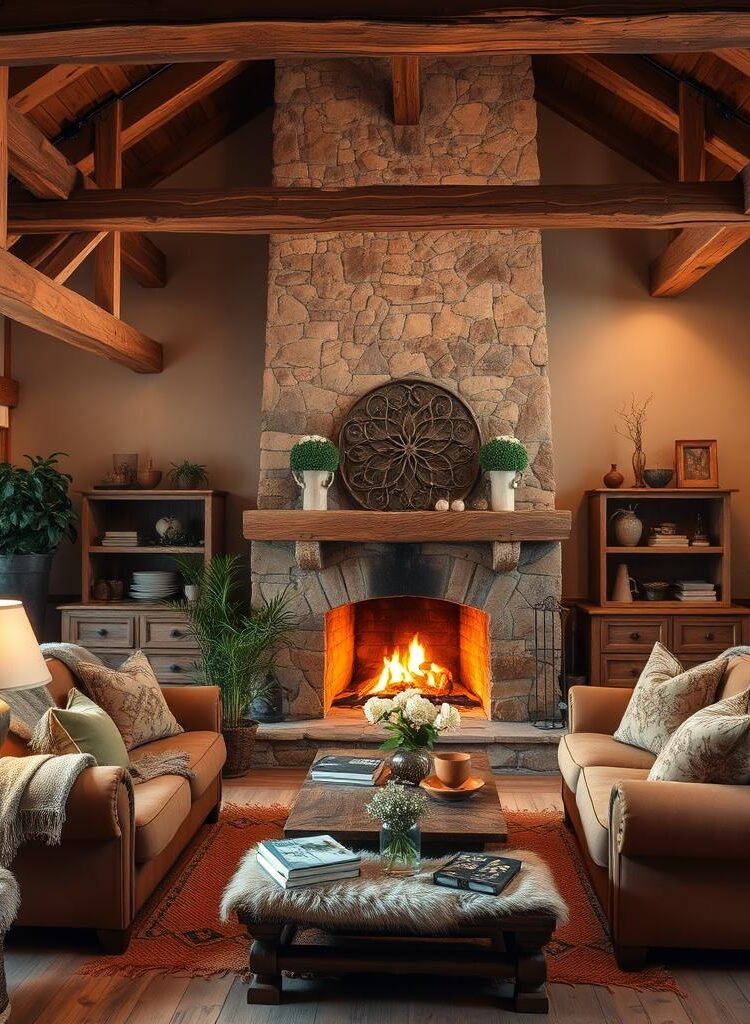
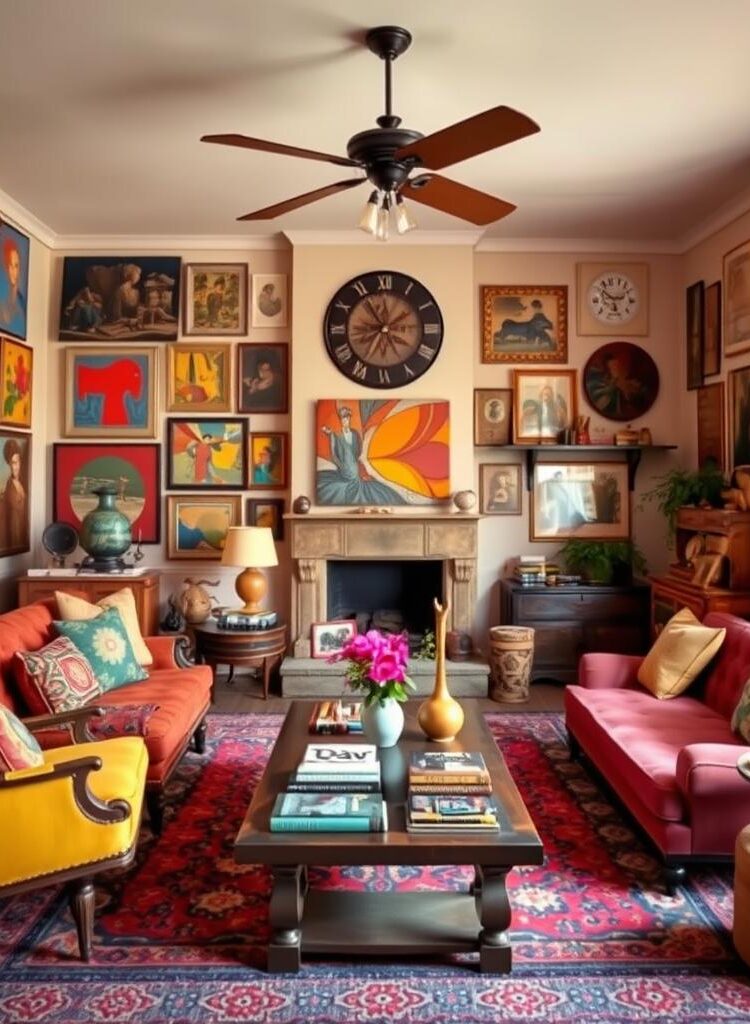
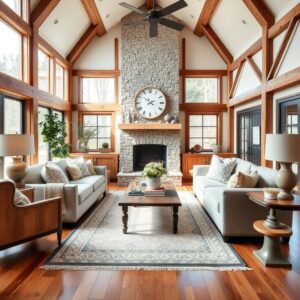
Leave a Reply